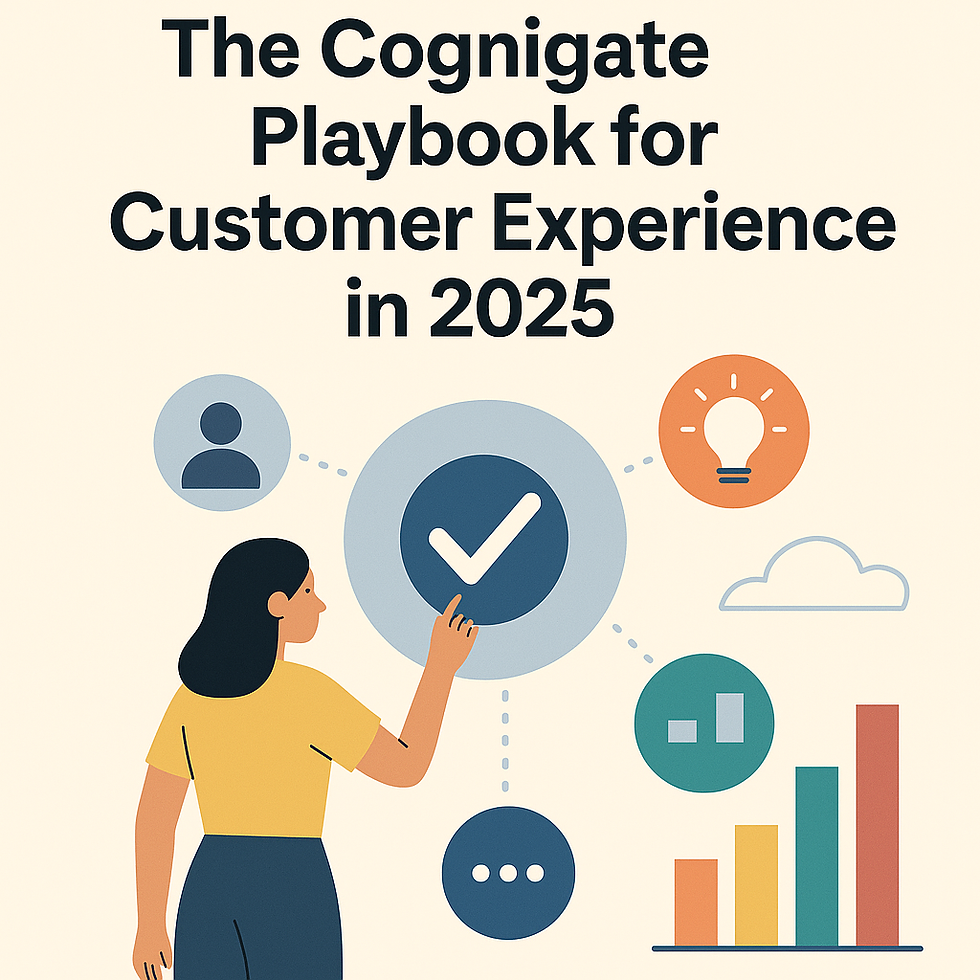- Cognigate Advisory Team

- Aug 28
- 3 min read

Introduction: Why Data is the New Boardroom Currency
In 2025, data is no longer just a byproduct of operations — it is the currency of trust, performance, and innovation.
Accenture puts it simply:
“Every business is now a data business. Leaders that treat data as an asset grow revenue at more than twice the rate of others.”
Yet most organizations are still struggling. Gartner estimates that 60–70% of data goes unused for analytics (Gartner).
In the Middle East, where governments and enterprises are investing billions in digital, the gap between data potential and business outcomes is widening. Cognigate believes bridging that gap requires building a metrics-driven organization (MDO).
The Problem: Data Without Direction
Collecting data is easy. Acting on it is hard. PwC’s survey of global executives revealed:
“Only 27% of executives say their data and analytics projects produce actionable insights.”
The risk? Investments in CRM, ERP, ITSM, or analytics platforms result in dashboards that look impressive but fail to drive decisions.
Cognigate’s Perspective: Excellence Through Data
At Cognigate, Excellence Through Data is one of our core values. For us, it means:
Embedding metrics into every stage of transformation (not as an afterthought).
Designing systems that produce actionable insights, not vanity dashboards.
Empowering leaders and employees with data literacy.
Measuring success through HX (Human Experience) — citizen satisfaction, employee adoption, customer loyalty.
“What gets measured gets improved — but only if what we measure is truly meaningful.” — Cognigate
The 4-D Model for Building a Metrics-Driven Organization
1. Discover: Define the Right Metrics
Most failures start here — organizations measure what is easy, not what matters.
Examples:
Tracking number of service tickets vs. tracking resolution time + employee satisfaction.
Tracking number of e-service launches vs. tracking citizen adoption rates.
Harvard Business Review stresses:
“Organizations should shift from output metrics to outcome metrics.”
2. Design: Architect Data Flows with Purpose
Metrics should be designed into workflows:
Integrating Freshworks ITSM dashboards with employee surveys.
Linking Profit.co OKRs with project milestones.
Using Peliqan or Boomi to unify siloed ERP/CRM/HR data.
“Bad data costs organizations an average of $12.9 million per year.” — Gartner
3. Deliver: Operationalize Metrics
Make metrics part of daily operations:
Dashboards for executives and frontline teams.
Clear ownership of KPIs (who is accountable for each metric).
Embedding metrics in performance management.
McKinsey research shows:
“Companies that rely on data-driven decisions are 23 times more likely to acquire customers, 6 times as likely to retain them, and 19 times more likely to be profitable.”
4. Drive: Create a Culture of Continuous Measurement
A metrics-driven organization is not built in a project; it is cultivated in a culture.
Deloitte notes:
“Data-driven cultures outperform peers by 30% in revenue and profitability.”
Cognigate embeds continuous improvement by:
Setting up data governance councils.
Training leaders and employees in data literacy.
Using metrics as the foundation of transformation ROI reviews.
Regional Context: UAE and MENA
UAE Vision 2031 emphasizes data-driven government decision-making. Ministries now mandate evidence-based KPIs for digital programs.
Saudi Vision 2030 prioritizes data and AI as national assets, creating the Saudi Data and AI Authority (SDAIA).
Enterprises in finance, telecom, and retail are pressured to deliver real-time analytics for customer journeys.
The Executive Playbook: How to Build a Metrics-Driven Organization
Step 1 — Redefine Success
Shift from output (tickets closed) to outcome (resolution time, NPS).
Step 2 — Invest in Integration
Use platforms like Peliqan and Boomi to unify siloed data across ERP, CRM, HR, and CX systems.
Step 3 — Empower Teams
Train leaders and employees in data literacy; democratize dashboards.
Step 4 — Tie Metrics to HX
Measure what matters to humans: citizen satisfaction, employee adoption, customer trust.
Step 5 — Review and Reinforce
Establish quarterly ROI councils, embedding metrics into leadership scorecards.
Conclusion: Excellence Through Data = Excellence Through Trust
Data without action is noise. Metrics without meaning are vanity. By 2025, organizations that succeed will be those that:
Define meaningful outcome metrics.
Design data flows that connect across silos.
Deliver metrics operationally across all teams.
Drive a culture of continuous measurement.
As Thomas Davenport, analytics pioneer, said:
“Every company has big data in its future and every company will eventually be in the data business.”
At Cognigate, we call it simply: Excellence Through Data.


